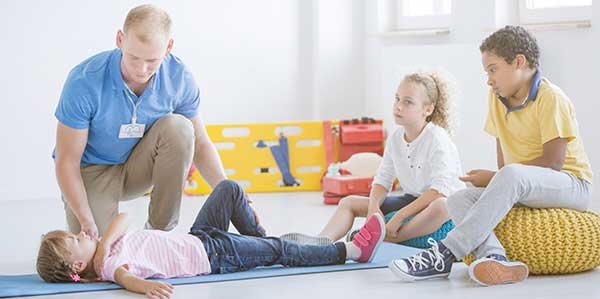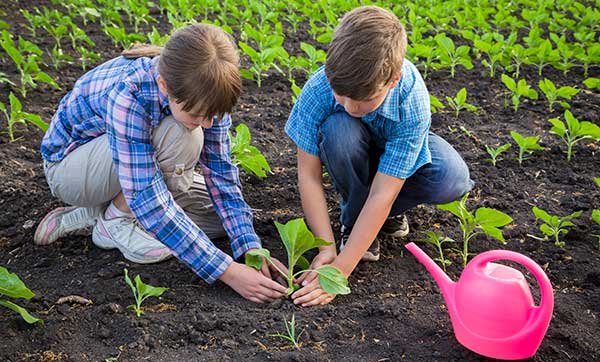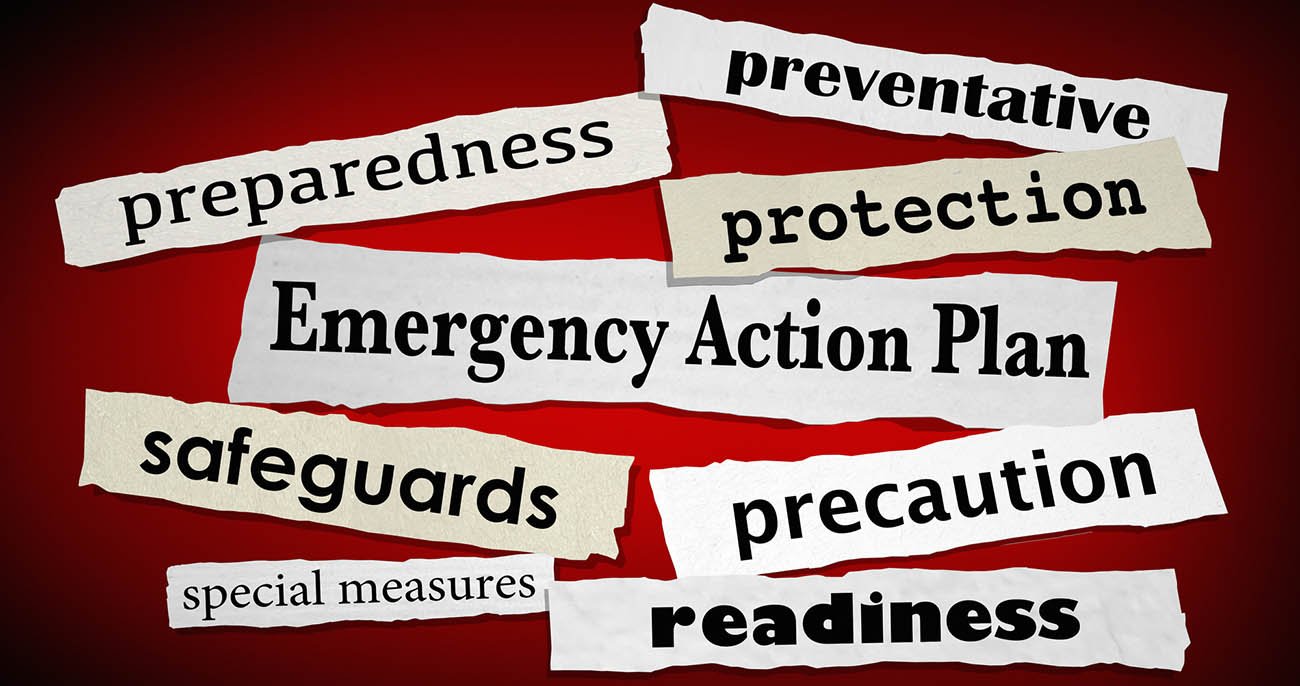This article will guide you on how to teach kids about prepping essentials, including basic survival skills, emergency plans, and the importance of being self-sufficient. Get ready to equip your little ones with the knowledge and confidence they need to navigate uncertain times.
How To Teach Kids About Prepping
Teaching kids about prepping is an essential aspect of their education and overall development. It is important for children to understand the concept of preparedness and the reasons behind it. By introducing prepping at a young age, children can develop crucial life skills, cultivate a sense of security and empowerment, and be better equipped to handle future challenges.
Understanding the Importance of Preparedness
Explaining to kids the importance of preparedness allows them to comprehend the potential risks and disasters that can occur in life. By understanding these risks, they can appreciate the need to be prepared for unexpected events such as natural disasters, power outages, or emergencies. Teaching them the value of being prepared not only instills a sense of responsibility but also empowers them to take action and protect themselves and their loved ones.
Developing Life Skills for Future Challenges
Prepping goes beyond simply stockpiling supplies or having emergency plans in place. It teaches children important life skills that can benefit them in various situations throughout their lives. By engaging them in activities such as creating emergency kits, learning about food and water storage, and developing self-sufficiency, kids acquire skills like organization, problem-solving, critical thinking, resourcefulness, and resilience. These skills are invaluable for navigating challenges that may arise in the future.
Creating a Sense of Security and Empowerment
When children are taught about prepping, they develop a sense of security and empowerment. They are reassured that they have the necessary tools and knowledge to face unexpected situations. This sense of security can alleviate anxiety and fear, allowing them to feel more confident and in control. Additionally, being actively involved in their own preparedness empowers children as they become proactive contributors to the safety and well-being of themselves and their families.
Getting Started
When introducing kids to the concept of prepping, it is crucial to consider their age and maturity levels. Adjusting the content and activities accordingly ensures that they can grasp the information and engage actively in the learning process.
Assessing Age and Maturity Levels
Children of different ages have varying levels of understanding and abilities. Younger children may require simplified explanations and hands-on activities to grasp the concepts, while older kids can handle more complex discussions. It is important to assess their age and maturity levels to tailor the teaching approach appropriately.
Introducing the Concept of Prepping
Once the age and maturity levels have been assessed, it’s time to introduce the concept of prepping in a child-friendly and relatable manner. Begin by discussing the importance of being prepared for unexpected events and framing it in a positive and empowering way. Relate it to everyday situations that they can easily comprehend, such as preparing for a school project or packing for a vacation.
Communicating the Benefits and Necessity
Children need to understand the benefits and necessity of prepping to fully grasp its importance. Discuss how being prepared not only keeps them safe but also helps them take care of others around them. Emphasize that prepping is not about promoting fear, but rather about being responsible and proactive. Highlight real-life examples where being prepared made a significant difference in people’s lives.

Building a Foundation
Once the basics of prepping have been introduced, it is important to build a strong foundation of knowledge and skills. This involves explaining potential risks and disasters, teaching basic survival skills, and creating family emergency plans.
Explaining Potential Risks and Disasters
To help children understand the need for preparedness, it is important to explain potential risks and disasters that can occur in their area or globally. This includes natural disasters such as earthquakes, hurricanes, or floods, as well as human-made emergencies like power outages or accidents. Use age-appropriate language and visuals to explain the causes, impact, and necessary precautions for each type of disaster.
Understanding Basic Survival Skills
Teaching basic survival skills to children equips them with practical knowledge that can help them in challenging situations. Start by teaching them basic first aid techniques such as CPR, treating minor injuries, and recognizing emergency signs. Move on to survival skills like building a shelter, starting a fire, finding clean water, and signaling for help. Encourage hands-on practice and role-playing scenarios to reinforce their understanding and confidence.

Creating Family Emergency Plans
Involving children in the creation of family emergency plans not only strengthens their sense of ownership but also ensures that they have a clear understanding of what to do in case of an emergency. Work together to create evacuation plans, communication protocols, and assembly points. Practice these plans regularly through drills and simulations, making sure that children are actively involved and aware of their roles and responsibilities.
Teaching Supply Management
Another important aspect of how to teach kids about prepping is teaching them about supply management. This includes creating emergency kits, teaching food and water storage, and emphasizing the importance of rotating and replenishing supplies.
Creating Emergency Kits
Guide children in creating their own emergency kits personalized to their needs and preferences. Help them understand the essential items to include, such as non-perishable food, water, clothing, flashlights, batteries, and important documents. Encourage them to maintain and update their kits periodically, ensuring everything remains in good condition and relevant to their current needs.
Teaching Food and Water Storage
Explain to children the significance of having an ample supply of food and water during emergencies when access to stores may be limited. Teach them proper food storage techniques, including using airtight containers, checking expiration dates, and rotating stock. Show them how to store water safely in clean containers and the importance of having a sufficient water supply for each family member.
Rotating and Replenishing Supplies
Teach children the importance of rotating and replenishing emergency supplies to ensure freshness and reliability. Explain the concept of expiration dates and demonstrate how to check and replace expired items. Involve them in the process of restocking supplies, making it an opportunity to reinforce their organizational and decision-making skills.
Developing Self-Sufficiency
Preparing children to be self-sufficient is a key aspect of prepping. By cultivating essential life skills, teaching gardening and food production, and encouraging DIY projects, children become more capable and resilient individuals.
Gardening and Growing Food
Introduce children to the concept of gardening and growing their own food. Teach them about planting seeds, caring for plants, and harvesting produce. This not only provides them with a valuable life skill but also instills an appreciation for the process of food production and fosters responsibility towards sustainable living.

Cultivating Essential Life Skills
Besides gardening, there are various essential life skills that children can develop through prepping. Teach them practical skills like cooking, sewing, simple home repairs, and self-defense. By enabling them to be self-reliant, you empower them to handle unexpected situations with confidence and resourcefulness.
Encouraging DIY Projects
Engage children in DIY (do-it-yourself) projects that allow them to develop problem-solving skills and creativity. Encourage them to create emergency tools, build shelters, or solve challenges using recycled materials. These hands-on projects foster a sense of accomplishment and independence, while also providing valuable practical skills.
Practicing Safety Measures
Teaching children about safety measures is an integral part of prepping. This includes educating them on first aid and medical skills, fire safety, home security training, and outdoor safety and survival techniques.
Teaching First Aid and Medical Skills
Teach children basic first aid skills, such as dressing wounds, performing CPR, and recognizing signs of distress. Encourage them to practice these skills with age-appropriate mannequins or through role-playing scenarios. Additionally, introduce them to common medical supplies and how to use them responsibly.
Fire Safety and Home Security Training
Familiarize children with fire safety measures, including how to prevent fires, safely escape in case of fire, and use fire extinguishers. Teach them about the importance of smoke detectors and how to test and maintain them. Additionally, guide them on home security practices, such as locking doors and windows, and reporting suspicious activities.
Educating on Outdoor Safety and Survival
Teaching outdoor safety and survival skills allows children to navigate unfamiliar environments confidently and responsibly. Educate them on topics such as identifying safe drinking water sources, building shelters, using compasses and maps, and recognizing potential dangers in nature. Encourage them to explore the outdoors while practicing these skills under adult supervision.
Financial Preparedness
Preparing children for financial challenges is an integral part of overall preparedness. By teaching them about budgeting, savings, emergency funds, and introducing concepts of investing and financial planning, children gain a foundational understanding of financial preparedness.
Teaching Children About Budgeting
Introduce children to the concept of budgeting by discussing income, expenses, and savings. Teach them the importance of distinguishing between needs and wants, and how to make informed financial decisions. Encourage them to create budgets for personal projects or savings goals to develop effective money management habits.
Savings and Emergency Funds
Teach children the value of saving money and establishing emergency funds. Encourage them to set aside a portion of any money they receive or earn into savings accounts. Explain the purpose of emergency funds and how they can provide a sense of security during unexpected financial crises.
Introducing Investing and Financial Planning
As children grow older, introduce them to the idea of investing and financial planning. Explain basic investment concepts in age-appropriate terms, such as the importance of diversifying investments, the power of compound interest, and long-term financial goals. This knowledge will enable them to make informed decisions and set themselves up for financial stability in the future.
Educational Resources
When you are learning how to teach kids about prepping, it is beneficial to explore various educational resources. These can include books, movies, documentaries, online courses, prepping articles, interactive games, and visits to museums and exhibitions.
Books, Movies, and Documentaries
There are numerous books, movies, and documentaries available that can provide valuable insights into prepping and emergency preparedness. Look for age-appropriate resources that offer engaging storytelling, educational content, and practical advice. Discuss and reflect on these resources together, encouraging children to share their observations and learnings.
Online Courses and Interactive Games
Online courses on how to teach kids about prepping and interactive games provide a fun and interactive way for children to learn about prepping. Look for courses that cater to different age groups, covering topics such as basic survival skills, emergency preparedness, and first aid. Interactive games can also offer valuable learning experiences, allowing children to apply their knowledge in a simulated environment.
Visiting Museums and Exhibitions
Museums and exhibitions focused on disaster preparedness often provide interactive displays and educational materials. Plan visits to these institutions to further enhance children’s understanding of prepping. Explore exhibits that showcase emergency response strategies, historical disasters, or the science behind natural phenomena. Engage in discussions and activities offered within these spaces to make the experience more interactive and memorable.
Promoting Community Engagement
How to teach kids about prepping should also involve promoting community engagement. By joining family and community preparedness programs, participating in drills and simulations, and organizing or supporting preparedness events, children develop a sense of collective responsibility and contribute to the overall resilience of their community.
Joining Family and Community Preparedness Programs
Research and join family and community preparedness programs in your area. These programs often offer workshops, training sessions, and resources that cater to different age groups. Engage children in these activities to further their understanding of prepping while also fostering bonding within the family and community.
Participating in Community Drills and Simulations
Take part in community drills and simulations organized by local emergency response agencies. These exercises replicate real-life emergency situations and provide hands-on experience for children to practice their preparedness skills. Participating in such activities allows children to witness the collaboration among community members and emergency responders and instills a sense of shared responsibility.
Organizing and Supporting Preparedness Events
Encourage children to take an active role in organizing and supporting preparedness events within the community. This could include organizing workshops, fundraisers, or awareness campaigns that focus on emergency preparedness. By actively contributing to such initiatives, children develop leadership skills, enhance their understanding of community resilience, and encourage others to be proactive in their own preparedness efforts.
Fostering Mental and Emotional Resilience
Preparing children for unexpected events goes beyond practical skills; it also involves nurturing mental and emotional resilience. By encouraging open communication, practicing stress management techniques, and promoting positivity and adaptability, children can develop the necessary skills to cope with challenging circumstances.
Encouraging Open Communication
Learning how to teach kids about prepping means creating an environment that fosters open communication with children about their concerns, fears, and thoughts regarding unexpected events. Encourage them to ask questions and express their emotions freely. Listen empathetically, validate their feelings, and provide age-appropriate explanations or reassurance. This open dialogue will help alleviate anxiety, build trust, and foster a sense of security.
Practicing Stress Management Techniques
Teach children various stress management techniques to help them cope with challenging situations. These techniques can include deep breathing exercises, mindfulness exercises, journaling, or engaging in hobbies they enjoy. Encourage regular practice of these techniques to develop resilience and emotional well-being.
Promoting Positivity and Adaptability
Instill a positive mindset in children by emphasizing the importance of adaptability and flexibility when facing unexpected events. Teach them the power of positive thinking, reframing challenges as opportunities for growth, and focusing on solutions rather than dwelling on problems. Encourage them to find silver linings and embrace change, fostering a resilient attitude that will serve them well throughout their lives.
How to teach kids about prepping is a critical investment in their future well-being. By understanding the importance of preparedness, developing essential life skills, and creating a sense of security and empowerment, children become more capable and resilient individuals. Empower them by involving them in age-appropriate activities that cover various aspects of prepping, from supply management to safety measures, financial preparedness, and community engagement. Through nurturing their mental and emotional resilience, children can face unexpected events with confidence, resourcefulness, and positivity.
